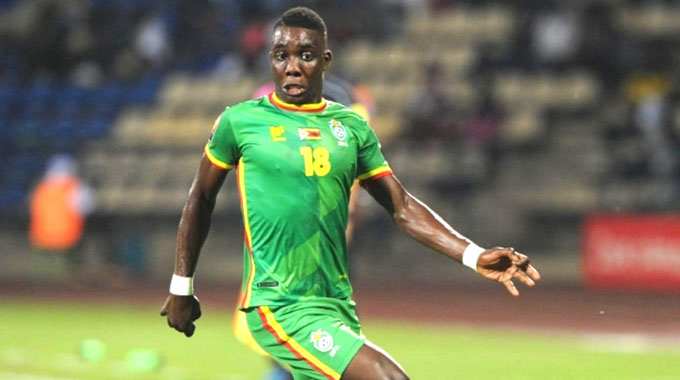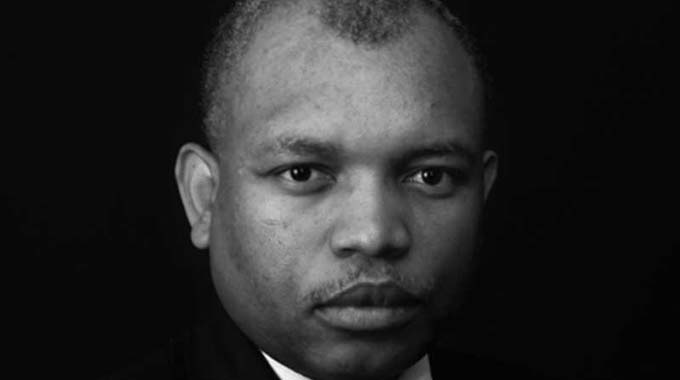WHAT A MARVELOUS FELLOW – HOPE’S GREATEST HERO AND FEAR’S WORST ENEMY

WHAT the HELL did I get myself into the last two weeks, trying to be religious, playing around with religion and writing about evil and the Devil, about good and God?
About Shadreck and Misheck, about Moses and Roses, about Ezekiel and Emmanuel, about the Bible and the Parable and about Paul and Saul.
You know, all the questions that flood your mind as you do the soul-searching exercise – like why Gold had be a signal of purity and its name had to borrow heavily from the Mighty name of God?
And why the word Evil represents darkness, immorality and wickedness and its name had to borrow heavily from the Devil himself as if to emphasise the twin links between the two?
Why Foul and Owl had to rhyme so beautifully yet they represent some dark arts?
And, if you are a Manchester United fan like me, never stop wondering why the predominantly Catholic German city of Munich had to be the city where our team’s plane had to crash in 1958?
Asking yourself questions like, was it in any way a reminder that there was something wrong, something punishable, with our nickname – Red Devils?
And, if not, why then did it happen, too, that 14 years later, the worst brazen attack, and massacre, of Olympic athletes and officials representing Israel would also have to happen in Munich at the 1972 Summer Olympics.
For some strange reasons, the number of those Israeli Olympians killed after Palestinian gunmen stormed their hostel had to be 11, quite an important number when it comes to sport.
It’s the starting number of players on a football team, the starting number of players in an American football team, the starting number of players in a field hockey team.
It’s also the number of players in a cricket team, the distance, in metres between the goal-line and the penalty spot in football and the length, in inches, of a ball used in American football.
Israel’s retaliation came in the form of Operation Wrath of God between 1972 and 1988, which gave birth to a Steven Spielberg blockbuster movie “Munich.”
A Canadian television film, released in 1986, about Mossad agents hunting down those Palestinians Israel suspected of having been involved in the Munich attacks, was called “Sword of Gideon.”
The film is based on the international best-seller book, Vengeance, written in 1994 by Canadian author, George Jonas, who died three years ago.
As if by some sheer coincidence, if you count the letters that make up his first name and surname, you get 11, the very number of those Olympians killed in Munich.
And, the first Palestinian shot dead in this operation was WAEL ZWAITER, as if every letter in his name (11), represented each and every Olympian who died in that attack in Munich.
So, in more ways than one, be it in life and sport, it’s hard not to hear that God is speaking to us and the point is whether we hear it, see it, or understand the message.
That was my story last week about my good old man Sunday Chidzambwa, when I said that, “thus far, the Lord has helped, and taken, him,” and rather than devour his soul with questions, which might not provide answers about why and how it had to end this way, he should just celebrate he made it this far.
In two days’ time, the world will mark the ninth anniversary of the day Chile’s San Jose mine collapsed, on August 5, 2010, trapping 33 miners 700 metres underground, the beginning of a daring 69-day rescue operation that would hold the entire globe spellbound.
During that rescue operation one of the miners, Jimmy Sanchez, who – at 19 years at the time was the youngest among those trapped underground – sent a letter to those, who were running the exercise at the surface, that a 34th miner had been with them from day one of their ordeal.
‘‘There are actually 34 of us,’’ Sanchez wrote in the letter. ‘‘Because God has never left us down here.’’
THE THIRTY THREE CHILEAN MINERS, FOOTBALL, AND FATE
Football is Chile’s national sport and, during the daring rescue operation, a fibre optic line was thrust underground, with the help of a local telecommunications company, which helped the trapped miners to watch a friendly international match between their national team and Ukraine.
Psychologists believed this was important to boost the morale of the trapped miners.
They were all passionate football fans and one of them, Franklin Lobos Ramirez, had been a professional footballer, who played alongside legendary Chilean forward Ivan Zamorano at local top-flight side, Club de Desportes Cobresal in the ‘80s, before evening featuring for his national team in an Olympic Qualifier.
Simply known as Cobresal, and nicknamed ‘‘The Miners,’’ they represent the Chilean copper mining town of Cobresal, with a population of about 7 000, enough for everyone to fit into the team’s home ground, the 12 000-capacity Estadio El Cobre.
Known as ‘‘El Mortero Magico,’’ or ‘‘The Magic Mortar,’’ Ramirez was a free-kick specialist and, on retirement, he became a miner in his homeland.
He was the 27th miner to be rescued and was handed a ball, which he juggled, by President Sebastian Pinera after emerging into the light.
Ramirez’s tale, as a miner since hanging up his boots, always had a touch of drama – in his first year, working underground, he was trapped inside La Carola mine when a fire broke out and, for hours, could barely breathe.
‘‘As a player, you didn’t have to pay for anything,’’ Ramirez once told the Cobresal fan club.
‘‘You just played football and represented the miners. Now I know what it means to fill your lungs with dirt and smoke to earn the cash to watch the (Cobresal) team play.’’
After they were rescued, the 33 Chilean miners even featured in an advert for the Bank of Chile, where they returned to the mine that almost took their lives, and declared, ‘‘Nothing Is Impossible.’’
So, why did the rescue of the 33 miners, after 69 days, turn into an event that would be linked with religion and football?
Because of Ramirez, the professional-footballer-turned miner, and the dominance of the number THREE to this tale which ultimately had a good ending.
According to the Gospel of Luke 3:23, Jesus ‘‘was about 30 years of age,’’ at the start of His ministry.
John the Evangelist says Jesus continued preaching for THREE years and, according to John and Paul’s narrative, Jesus died at the same hour (Friday 3pm) on April 3 AD33, when the Passover lambs were slaughtered, and our Lord and Saviour rose from the dead THREE days later.
And, Ramirez, ‘‘The Magic Mortar,’’ was 33 when his professional football career ended, when he left Cobresal, and moved to lower-division side La Serena.
He had only been working at the San Jose mine for THREE months, when the mine collapsed and:
33 miners were trapped underground when the mine collapsed.
It took 33 days of drilling for the rescue teams to finally get to them.
The first note the miners sent up, to reveal they were alive, had 33 characters
The rescue shaft used had a diameter of 66 centimetres – (2 x 33)
The rescue began on October 13, 2010, which can be written as 13/10/10.
When you add the numbers of the dates 13 + 10 + 10 you then get 33.
Maybe, it explains why those rescued miners left an inscription, on a rock in the tunnel that had been their underground home for two months, ‘‘HERE STAYED 33 MINERS, GOD WAS WITH THEM.’’
A COAL MINER’S SON STRIKES GOLD, A RETURNING QUEEN HITS THE JACKPOT
In the year the San Jose copper and gold mine collapsed, in 2010, a teenage Zimbabwean footballer made his debut for Bantu Rovers, a club that specialises in identifying and nurturing footballers, without any of the razzmatazz that usually accompany the arrival of such exciting talent.
He was only 16.
Not even his rather strange name, Marvelous, could provoke interest and, like the Chilean mining town that would dominate headlines later that year, he was also from a similar settlement – a coal mining town tucked away in north western Zimbabwe.
Marvelous was born there, in those coalfields, whose highest elevation, about 770m, is almost the same distance, ironically, as the depth (700m) which the 33 Chilean miners found themselves trapped, underground, during their 69-ordeal.
But, just like those trapped miners, he refused to give up on his dreams, of playing in the English Premiership one day, even though his chances appeared remote, coming from a country that has just produced a handful of players who have made that grade.
On Thursday, after a European adventure that first took him to France, the Netherlands and Belgium, Nakamba’s dreams came true when he was unveiled as an Aston Villa player on a five-year deal.
And, throughout his journey, one thing has stood out – his unshakable faith in God, attributing every success story he has had to a blessing from the Lord.
“I’ve just signed a five-year deal and I’m happy. I just thank God for His blessings,” he said after sealing his Villa deal.
It’s easy to dismiss all this as coming from someone who has just struck the jackpot.
But, an analysis of Nakamba’s journey will show he means what he says because, after featuring for Dutch side Vitesse in a pre-season friendly against Chelsea stars like Diego Costa, Fabregas, Cahill, Ivanovic and Torres, in August 2014, his reaction was the same.
“Eish, it was like a dream looking from where I came from and I thank God who made me believe impossible is nothing,” he said back then.
Little did he know that the Chelsea skipper that day, John Terry, would be his assistant Villa coach in just five years’ time.
Last November, after a five-star show in a 4-0 Champions League destruction of a Monaco side under the guidance of French legend Thierry Henry, with Club Brugge inflicting the heaviest defeat suffered by the French club in the competition, Nakamba was typically an oasis of humility.
“It has been a fantastic experience and a dream come true,’’ he said.
‘‘Competing in the best club competition in the world and giving thanks to the Most High for everything and hopefully to continue working hard keep on learning, improving and getting better in every match.’’
That this was Club Brugge’s first win in a group match in the Champions League assignment in 13 years and he made 67 accurate passes out of 77 attempts in the match, getting an 88 percent mark from the UEFA website, didn’t even matter to him at all.
No outrageous social media posts of how he dominated the midfield, no Twitter posts of how he now felt he could compete against the best, no Facebook posts of how he felt he was the best, just the humble response thanking God for everything, for this chance.
That’s why, in my humble analysis, this breakthrough move could not have happened to a nicer chap, a fellow who – like those 33 Chilean miners – refused to give up on his dreams and, crucially, handed his fate into the hands of the Lord, praising Him, appealing to Him and thinking Him all the time.
I spent a lot of time with him in Cairo, during the last AFCON finals, and was blown away by his professionalism, his unshakeable faith and the fact that he is just a very good man.
Watching him spend hours in the swimming pool, just trying to beat the injury he picked in the first match against Egypt, so that he could represent his country in the subsequent matches, was amazing and showed me he was hope’s greatest hero and fear’s worst enemy.
Don’t tell me he is now set be the FOURTH Zimbabwean, whose football career started in the domestic game, set to play in the English Premiership because, after my story about this number last week, I have been getting a lot of feedback.
That the NILE River, not far from where Mhofu’s Warriors journey ended, has FOUR letters, that Moses – who was rescued from the Nile by Pharaoh’s daughter – grew up to be the one who led the Israelites out of Egypt after they had spent 400 years there, that this year marks 400 years since the first African slaves arrived in the United States.
That one of those slave descendants, PELE, would become the world’s greatest footballer and his name has FOUR words, and that Pele was born in 1940 and his last World Cup success, in the 1970 World Cup final against Italy in Mexico City, the Brazilians won 4-1.
That an American delegation visited Ghana this week to mark 400 years of the first arrival of African slaves in the United States and, the last time the Ghanaians won the AFCON title, in 1982, they were inspired by the African PELE or AYEW, whichever way, FOUR letters.
Or, that, after our 0-4 thrashing by DRC, our first match after that would be a 4-0 win over Mauritius, whichever team they fielded, under a coach with a FOUR-letter nickname, Rahman ‘‘Rush’’ Gumbo or even that the Mighty Warriors would open their COSAFA Cup campaign with a 4-1 win over Angola.
And they would follow that up with a 4-0 win over Mozambique yesterday and their returning poster girl, Rudo Neshamba, now has FOUR goals.
Please, believe me, it’s also cracking my HEAD (oh, it’s another FOUR-letter word).
To God Be The Glory!
Peace to the GEPA Chief, the Big Fish and all the Chakariboys in the struggle.
Come on Warriors!!!!!!!!!!!!!!!!!!!!!!!!!
Khamaldinhoooooooooooooooooooo!
Text Feedback – 0772545199
WhatsApp – 0772545199
Email – [email protected] [email protected] You can also interact with me on Twitter – @Chakariboy, Facebook, Instagram – sharukor and interact with me every Wednesday night, at 9.45pm, when I join the legendary Charles “CNN’’ Mabika and producer Craig “Master Craig’’ Katsande on the television magazine programme, “Game Plan”










Comments